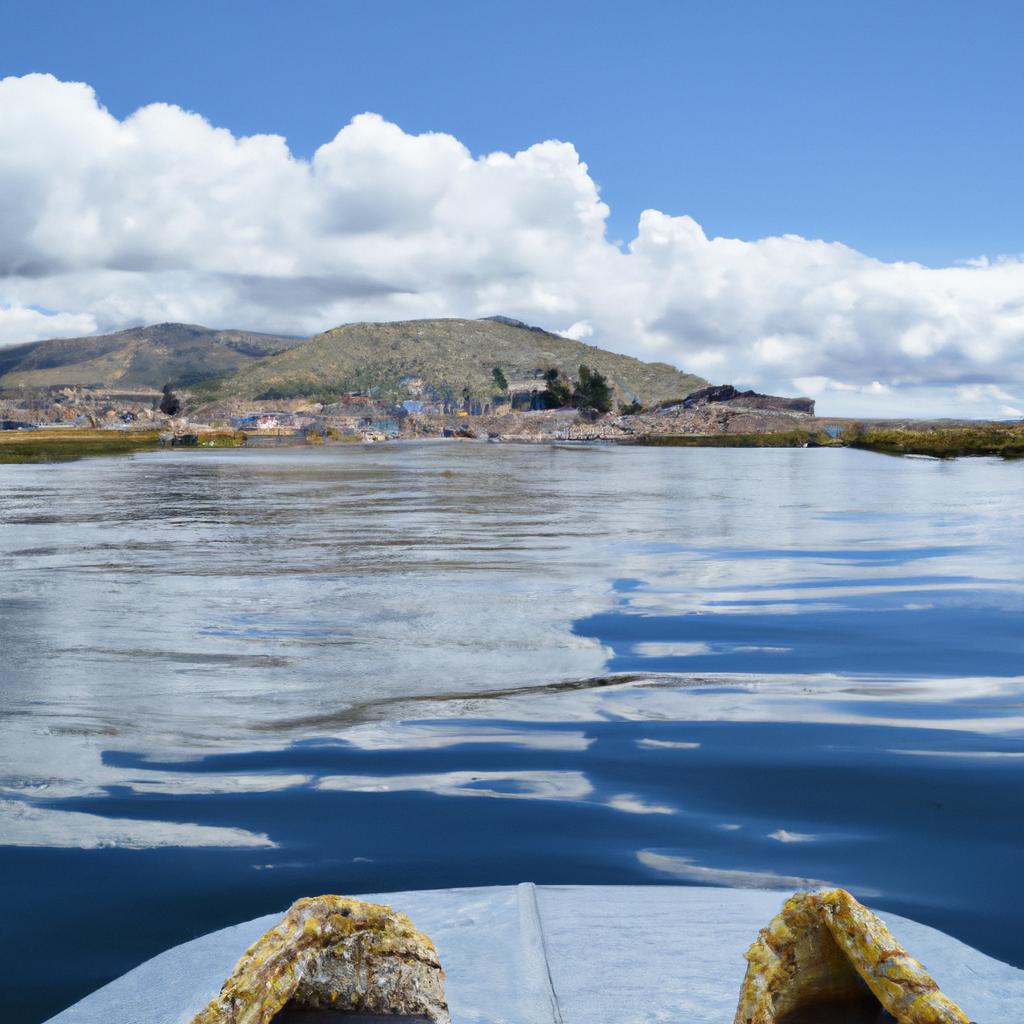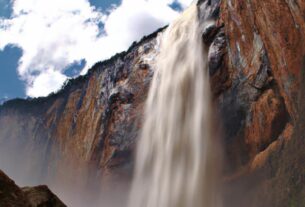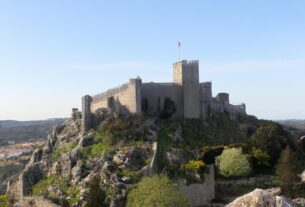Are you ready for an extraordinary adventure that will take you off the beaten path? Look no further than the floating islands of Lake Titicaca. Nestled in the Andes Mountains, on the border of Peru and Bolivia, Lake Titicaca is the highest navigable lake in the world and home to the Uros people and their exceptional floating islands.
The Uros people have been residing on these islands for centuries, ingeniously using the totora reeds that grow in the lake to construct their homes, boats, and even the islands themselves. Exploring the floating islands offers a remarkable opportunity not only to witness this remarkable engineering feat but also to immerse yourself in their traditional way of life and delve into their rich cultural history.
Lake Titicaca holds a special place in the hearts of the local communities, providing not only a source of livelihood but also a strong connection to their heritage. As you explore the floating islands, you’ll quickly grasp the significance of this lake to the Uros people and the surrounding communities.
So get ready to embark on a journey that will transport you to one of the most unique places on Earth. In the following sections, we’ll take a deeper dive into the history, life, environmental challenges, and hidden gems of the Lake Titicaca floating islands.
History of the Floating Islands
Origins of the Floating Islands
Legend has it that the Uros people began their floating island life centuries ago to escape the Inca Empire. However, historians believe that the Uros people have inhabited the lake for even longer, possibly dating back to pre-Columbian times.
Initially, the Uros people built their islands as a means of isolation and protection. Over time, they developed a distinctive way of life centered around the lake, relying on fishing and the totora reeds for sustenance.
Traditional Methods of Construction and Maintenance
For generations, the Uros people have constructed and maintained their floating islands using totora reeds. Harvested from the lake, these reeds form the foundation of the islands, anchored to the lakebed using ropes and sticks.
As the lower reeds decay, new ones are continuously added to the top. Maintaining the islands is an ongoing task, requiring the Uros people’s tireless effort to keep their homes afloat.
Visiting the floating islands not only provides a glimpse into this incredible display of engineering but also offers an opportunity to learn about the history and traditions of the Uros people. In the next section, we’ll delve into daily life on the floating islands.
Life on the Floating Islands
The Uros people lead a unique life on their floating islands. Their homes, boats, and even the islands themselves are entirely constructed from totora reeds, a plant abundant in Lake Titicaca. These reeds also serve as a source of food, medicine, and fuel for the Uros people.
Daily Life of the Uros People
Community is at the heart of life on the floating islands. The Uros people live in small, close-knit communities, and their daily routines revolve around fishing, weaving, and farming. They rely on the lake for their sustenance, with fishing being one of their primary sources of income. Traditional fishing methods, such as nets and traps, are employed to catch fish in the lake.
Unique Cultural Customs and Traditions
The Uros people possess a rich cultural heritage that manifests in their daily lives. They preserve unique customs and traditions that have been passed down through the generations. Their language, music, dance, and traditional clothing, made from the totora reeds and adorned with colorful embroidery, showcase their vibrant culture.
One of the most fascinating aspects of their culture is the floating islands themselves. These islands are constructed and maintained using traditional techniques handed down through generations. The Uros people’s deep connection to the lake is evident in their resourcefulness and ingenuity.
Tourism and its Impact on the Uros Community
Tourism has brought both opportunities and challenges to the Uros community. On one hand, it has provided economic benefits and helped preserve their traditional way of life. On the other hand, tourism has placed pressure on the community to cater to the needs of visitors, leading to issues such as over-tourism and environmental degradation.
To mitigate the negative impacts of tourism, responsible travel is crucial when visiting the floating islands. Show respect for the Uros people and their culture, minimize your environmental footprint, and support local businesses. By doing so, we can ensure the preservation of the Uros people’s unique way of life for generations to come.
Environmental Challenges
Lake Titicaca, like many other bodies of water worldwide, faces significant environmental challenges. Pollution, overfishing, and climate change pose threats to the delicate ecosystem of the floating islands.
Threats to the Ecosystem of Lake Titicaca
Pollution stands as one of the most significant challenges to Lake Titicaca’s ecosystem. Urban growth has resulted in increased sewage and pollutant discharge into the lake. This pollution harms both the plant and animal life within the lake and impacts the Uros people, who rely on the lake for their livelihood.
Overfishing also plagues Lake Titicaca. The introduction of non-native fish species has disrupted the lake’s natural balance, causing a decline in the native fish population. This decline significantly affects the Uros people, who depend on fishing for sustenance and income.
Measures Taken to Preserve the Floating Islands
To combat these environmental challenges, various measures have been implemented to preserve the floating islands and Lake Titicaca’s ecosystem. The Uros people themselves have played a critical role, working with external organizations to adopt sustainable fishing practices and reduce lake pollution.
Conservation organizations have also contributed by raising awareness about Lake Titicaca’s importance and advocating for stronger environmental regulations. Educational programs for local communities, promotion of sustainable tourism practices, and lobbying for stricter environmental policies are part of these efforts.
Role of the Uros People in Conservation Efforts
The Uros people, deeply connected to the lake, have been instrumental in conservation efforts. They have actively participated in implementing sustainable fishing practices, reducing pollution, and promoting eco-friendly tourism. By involving the Uros people in conservation initiatives, we can preserve their unique way of life while safeguarding the fragile ecosystem of the floating islands.
In the next section, let’s explore some of the popular activities for visitors to the floating islands and provide tips for responsible tourism.
Exploring the Floating Islands
Are you ready to experience the magic of the floating islands? Here are some popular activities to add to your itinerary:
Popular activities for visitors to the floating islands
- Take a boat tour: Embark on a guided boat tour of the floating islands to learn about the history and culture of the Uros people. Visit multiple islands and enjoy a ride on a traditional reed boat.
- Meet the locals: Spend time with the friendly Uros people and learn about their way of life. For a more immersive experience, consider staying overnight on one of the islands.
- Try the local cuisine: Indulge in traditional Uros dishes, such as fresh fish from the lake and quinoa soup. Don’t miss out on their famous quinoa bread!
Tips for responsible tourism
While visiting the floating islands offers a unique experience, responsible tourism is essential. Consider the following tips:
- Respect the culture: The Uros people have a rich cultural history, and it’s crucial to respect their traditions and way of life. Always ask for permission before taking photos and be mindful of their customs.
- Support the community: Purchase handmade crafts from the locals to support their livelihoods. Additionally, consider donating to local organizations that work towards preserving the environment and culture of the floating islands.
- Minimize your impact: The floating islands form a delicate ecosystem, so it’s vital to minimize your impact. Avoid littering or leaving anything behind and refrain from using single-use plastics.
Hidden gems to discover on the islands
While the floating islands are a popular tourist attraction, there are still hidden gems to uncover. Here are some off-the-beaten-path spots to check out:
- Bird watching: Keep an eye out for the various bird species that call the floating islands home, such as the Andean coot and the giant hummingbird.
- Traditional dances: Witness traditional Uros dances, like the Waca Waca, performed by the locals during festivals and celebrations.
- Offshore islands: Venture out to nearby offshore islands, such as Taquile Island, to experience the distinctive culture and breathtaking scenery of the region.
Are you ready to explore the floating islands of Lake Titicaca? By following these tips and seeking out hidden gems, you’ll have an unforgettable experience while supporting the local community and preserving the environment.
Conclusion
Lake Titicaca’s floating islands are a world wonder that showcases the ingenuity of the Uros people and their remarkable culture. As we’ve explored in this article, these islands are not just a tourist attraction; they hold immense significance to the local communities and their way of life.
While tourism has brought economic opportunities to the Uros people, it’s crucial to approach it with responsibility and respect. By supporting local businesses and understanding the cultural customs and traditions of the Uros people, we can contribute to their sustainable development and the preservation of their way of life.
As we wrap up our exploration of the Lake Titicaca floating islands, we hope you feel inspired to visit and experience this unique cultural treasure firsthand. Don’t miss out on the opportunity to witness the beauty and history of this incredible place.
Thank you for joining us on this journey through Lake Titicaca’s floating islands. At TooLacks, we’re committed to providing informative and engaging content about all aspects of nature, gardening, and animals. For more exciting articles to come, visit TooLacks.
Sourced from:



